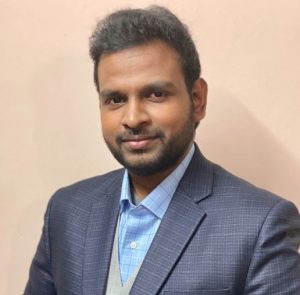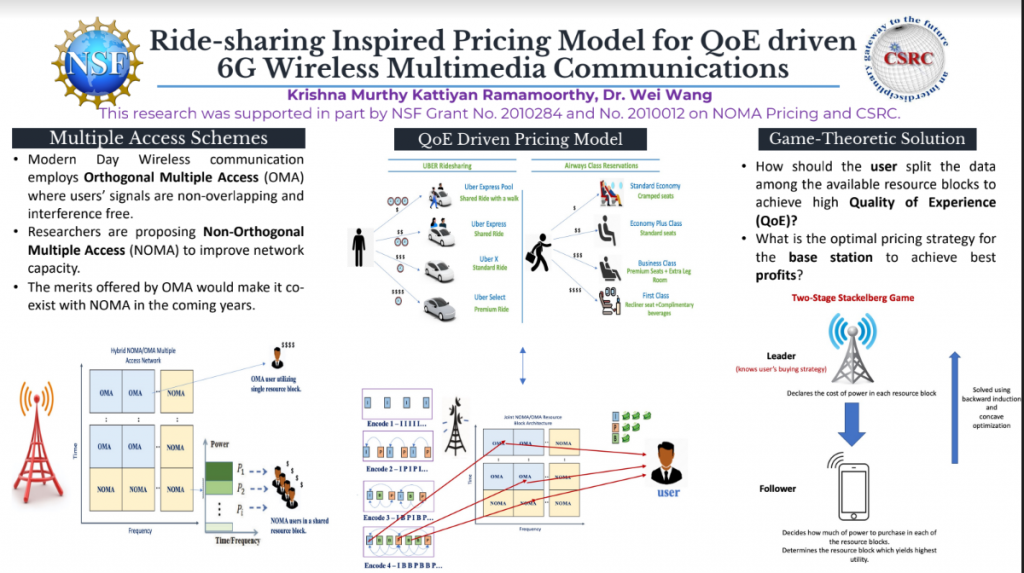
My name is Krishna and I am a passionate researcher in the field of Wireless Networks & Communications. My research interests include multimedia communications, video encoding strategies, QoE-QoS issues, network economics and IoTs. My PhD research is focussed on developing novel QoE-driven pricing schemes for next-generation wireless communication protocols. I have publications from international conferences such as IEEE GLOBECOM and IEEE ICC. I am also an instructor for CS160: Java Programming class at SDSU. Apart from research and teaching, I spend time volunteering for San Diego Humane Society. My hobbies include painting, aquascaping, and fish-keeping.
Research Advisor(s)
Wei Wang
Research Abstract
Non-Orthogonal Multiple Access (NOMA) has been a hot research topic in recent years as it has been advocated as a promising network access technique for 6G cellular networks and beyond. In comparison to Orthogonal Frequency Division Multiple Access (OFDMA), which is the current de facto standard for network access; NOMA provides a set of desirable potential benefits, such as improved spectrum efficiency, enhanced connectivity, and reduced latency with high reliability. The fundamental philosophy of NOMA is to cater multiple users simultaneously using the same resource block spanning across time, frequency, and space. This would dramatically improve the network capacity as each base station could support hundreds of more users concurrently.
However, there are several implementation challenges lying ahead in terms of optimal power allocation among users, resource block allotment and strategic pricing. These issues are addressed in this research by introducing a novel pricing technique called NOMA Pricing. Since multiple users can now be supported on a single resource block; users may prefer one block (due to lower latency or higher throughput) over the other blocks when the price is uniform. To dress this, NOMAP architecture allows the base station to dynamically price the resource blocks based on noise, interference, and the available power. Optimality in power allocation in a resource block is achieved by permitting the user to dynamically choose the amount of power to purchase based on their QoE demands and application. Therefore, NOMAP bridges the gap between price charged by the content provider and Quality of Experience (QoE) of the mobile customer.
The efficacy of the proposed NOMAP architecture was put to test by studying it over a simulated network with a single base station and numerous resource blocks. The utility maximization interplay between the user and base station was then translated into a Game theoretic problem and several game theoretic methodologies have been leveraged to derive optimal solution. Furthermore, the efficacy of the theoretical solutions and the model were put to evaluated using simulation studies using MATLAB.
Click image to view research report presentation!

